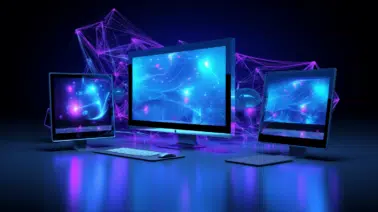Working in education technology, I hear a lot of lingo and theories in the industry. Popular adjectives for learning currently include: project-based, applied, adaptive, personalized, blended, mastery, competency… I’m guilty of using those terms all the time as well. But what strikes me is that none of this is new. In fact, so much of what we know about learning, early childhood educators have known for years.

6 things you learned in Kindergarten will take you farther than you think at work!
And education really can no longer end early in our lives in college. As technologies rapidly change, careers change apace. We can’t afford to forget about workforce education and to not embrace lifelong learning. So with the school year in full swing, here are 6 reminders that all we need to know about lifelong adult learning, we learned in Kindergarten.
1) Storytime!
There’s a reason why stories are so popular and so powerful in classrooms. They allow children to learn language and concepts within contexts that excite their imagination and matter. Just an early reminder of why applied learning, context, and the power of stories remains just as important when it comes to corporate training. It’s why case studies are used in business schools. And when it came to coding, why I got pulled in by Udacity’s CS101 course where you build your first mini-Google (search engine).
2) I don’t know how to do that … yet
We talk about failing forward, trying new things, and taking risks. Of always being open to learning. With children you can see this innate hunger for learning. It’s their innate “growth mindset.” The baby who will try to grasp an object again and again. My youngest who is learning to walk and starting to pick up language. He doesn’t care that he doesn’t know how, it’s just a matter of keeping at it and when. There is so much that they don’t know how to do…yet. Their innate curiosity keeps them going. And with the right encouragement, we can all tap into our innate curiosity.
3) “But why?”
My son, for a while, drove me crazy with that question as one explanation led to another question. He genuinely was curious. Let’s always strive to nurture curiosity. So much of workforce education focuses on the “how” and that’s limiting.
“When you focus only on the HOW, your knowledge is fragile.”
As one student recently reflected, “One thing I love about Udacity classes is that they focus as much on the big picture of why to do something, as on how to technically execute something.”
4) We learn; we are not taught
This was something that really struck me about the amazing Kindergarten teachers we’ve been lucky to have over the years. They are important as “Teachers,” but not in the way we think of teachers. They guide, they mentor, they play alongside. They involve other students in co-teaching. They learn and demonstrate learning from the children.
In and out of the classroom, they take many shapes and sizes. If we only learn from people who have teacher in their title, life would be so limiting! In my career to date, I have been lucky to part of teams from whom I could learn. Most of the true learning in my career has not been when I’ve been overtly taught.
5) We are all artists (and scientists/writers/engineers/firefighters…)
My daughter is going to grow up to be an inventor/artist/singer/doctor. She does not understand why there are right-brained or left-brained professions — after all, we need our full brain! And as adults, we should remind ourselves that we should not buy into that old canon. Tom Kelley from IDEO has a great story on what it means for innovation. The gist:
Let’s aspire for our workforce to be smart creatives and allow them to “just try stuff.”
6) Playing is learning by doing
Note this is not about just fun. It’s not about finding your passion or purely happiness. Sometimes it’s hard and play can be frustrating. When the block of towers falls, when you can’t get the pipes to line up, it’s good to sweat it out. But play is fundamentally about doing something active. It’s not enough to just watch videos or read a textbook when you want to learn how to code, to just take a tech example. It’s much more effective to play with some code and build your first mobile app to gain those skills. So, why should workforce training be associated with libraries of videos? Let’s get some projects and hands-on-playing-with-play-doh-and-sand-and-paint type of learning going! As professionals, we should remember to play.
Curious to see what employers who worry about talent, or thought leaders in workforce education, would add to this list. Or what any fellow parents with young children have observed at school and at home and at work. To take a cue from my kids, I want to learn more! Comment below or tweet @shen_ed.



